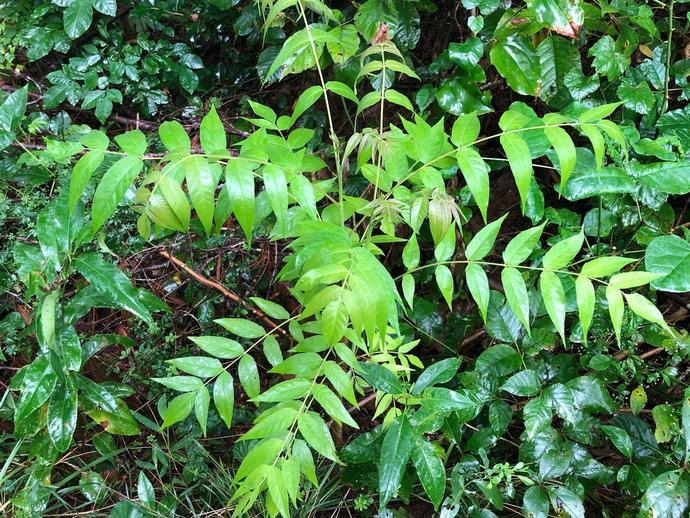August 8, 2020
Ailanthus altissima is commonly known as the "tree of Heaven," and frankly, Heaven should consider suing it for defamation of character. In its native China, this plant has a much more accurate name: 臭椿, which means "foul smelling tree."
Ailanthus altissima is native to northeast and central China, but it was brought to Europe in the 1740s and the U.S. in 1784. It was initially considered a beautiful tree to plant in the garden, but gardeners soon discovered two unfortunate facts about the tree: one, it has a foul smell, especially while flowering, and two, it's nearly impossible to kill. Today, it is internationally recognized as an invasive species.
There are a number of qualities that make tree of Heaven particularly invasive. It spreads aggressively; if you cut one down, the roots will sprout new shoots within days. It thrives in full sun and areas that have been disturbed by man. It can tolerate pH levels as low as 4.1, and it can even withstand soil with high salt content. It can grow as much as 6.5 feet per year during its first few years of life. Perhaps worst of all, it produces a chemical called ailanthone that inhibits the growth of other plants around it!
However, tree of Heaven may serve as an unlikely ally against another invasive pest: Lycorma delicatula, better known as the spotted lanternfly. The spotted lanternfly is an invasive planthopper that was first discovered in the U.S. in 2014. While it can devastate a wide range of our native plants, its preferred host is -- you guessed it -- tree of Heaven.
The Pennsylvania Department of Agriculture recommends using tree of Heaven as a tool for controlling spotted lanternflies. If you have tree of Heaven on your property, you can cut down most of the trees, leaving only a few male trees (the spotted lanternfly needs to eat from a male tree of Heaven before it can lay eggs). The remaining male trees serve as "trap" trees and can be wrapped with sticky bands to catch any spotted lanternfly nymphs in the spring. While spotted lanternflies haven't been seen in southwest Virginia yet, they have been found in northern Virginia and are likely coming our way sooner rather than later. #BenInNature
ABOUT THIS POST
Social distancing can be difficult, but it presents a great opportunity to become reacquainted with nature. While he is working from home, Administrator of Science Ben Williams is venturing outdoors each day to record a snapshot of the unique sights that can be found in the natural world.
NATURE PHOTO IDENTIFICATIONS
If you discover something in nature that you would like help identifying, be sure to message us right here on Facebook with a picture (please include location and date of picture) and we'll have our experts help you identify it!

 Hours & Admissions
Hours & Admissions Directions
Directions

